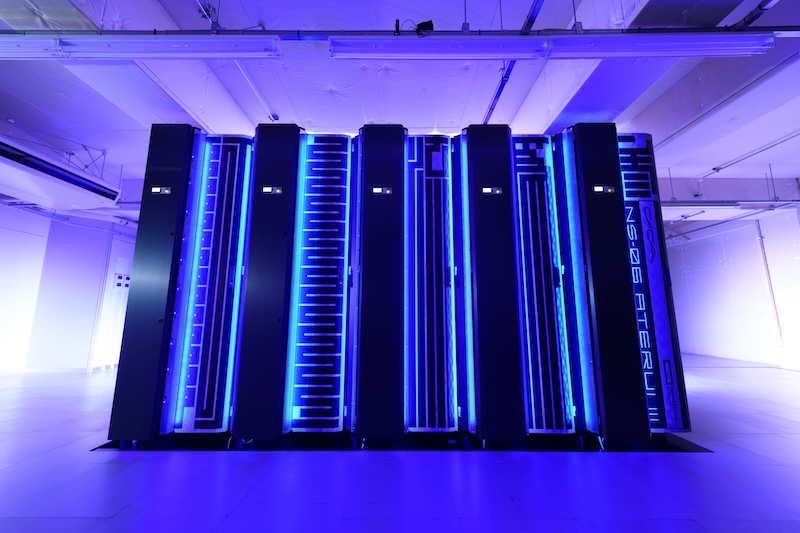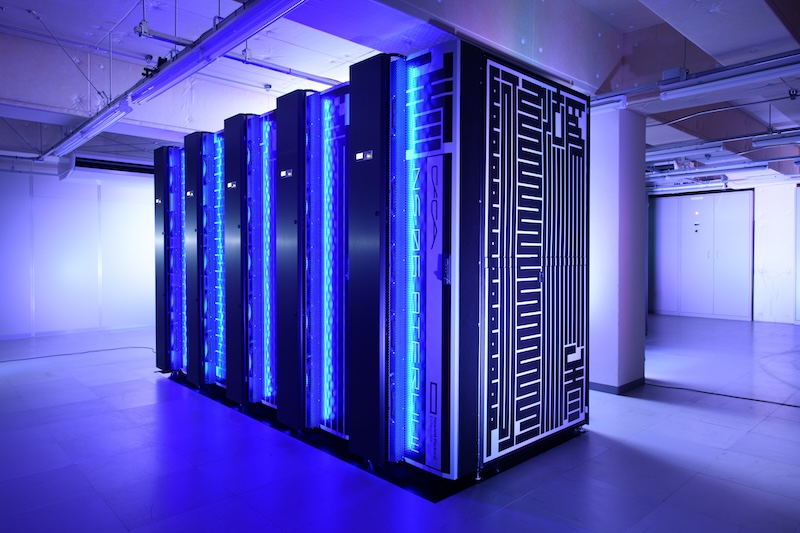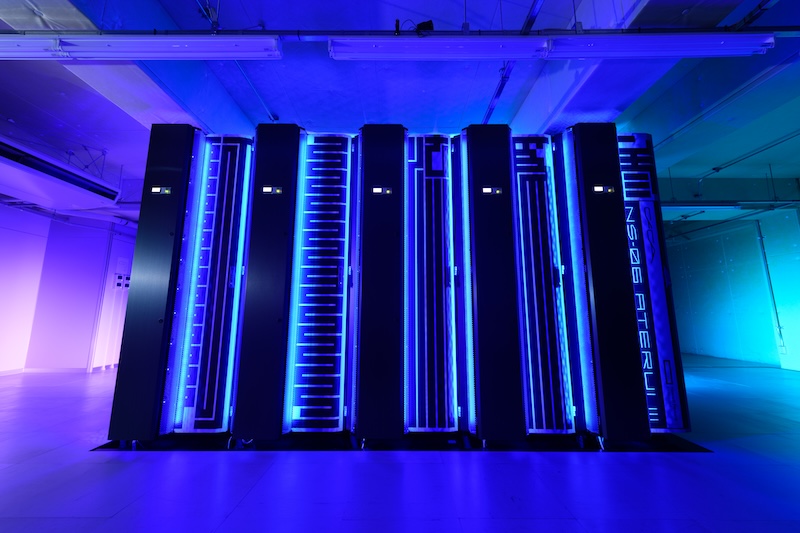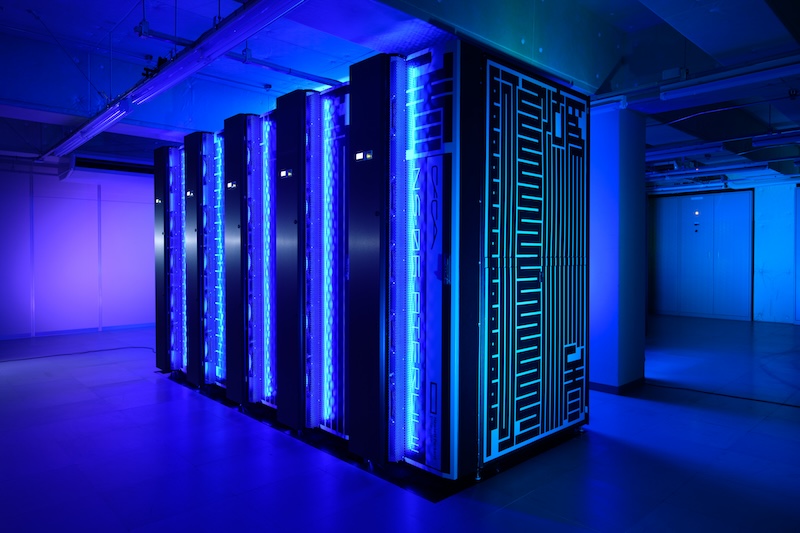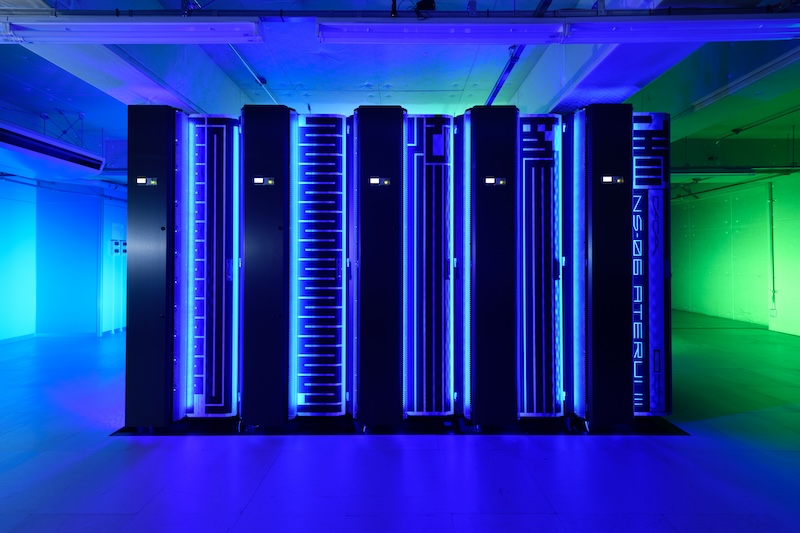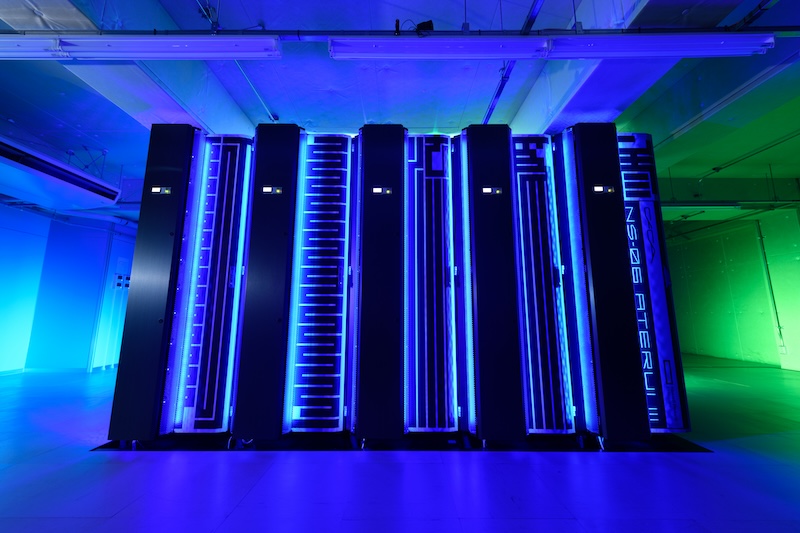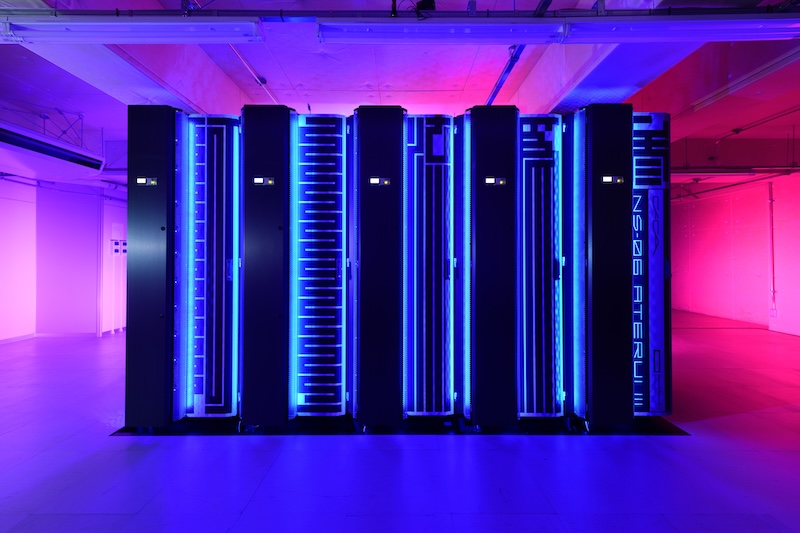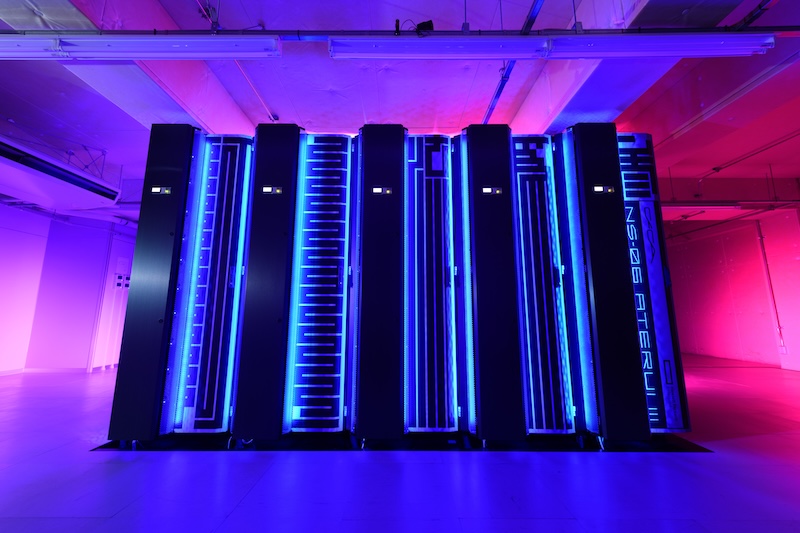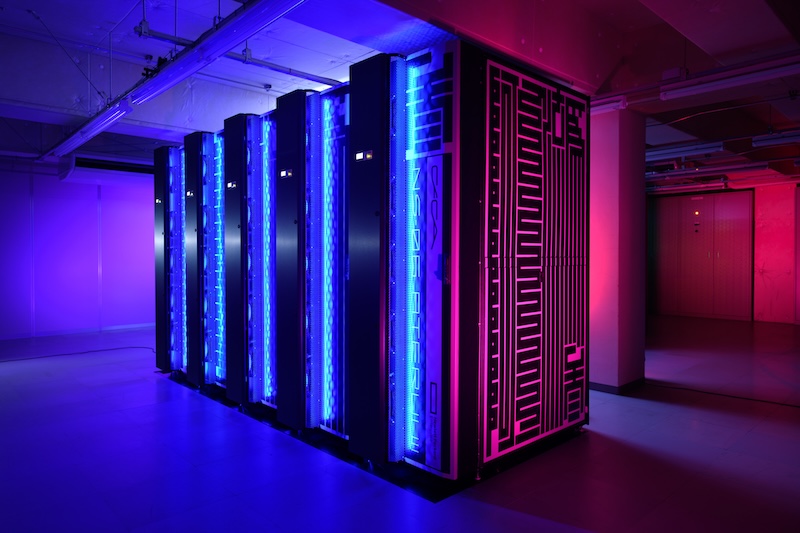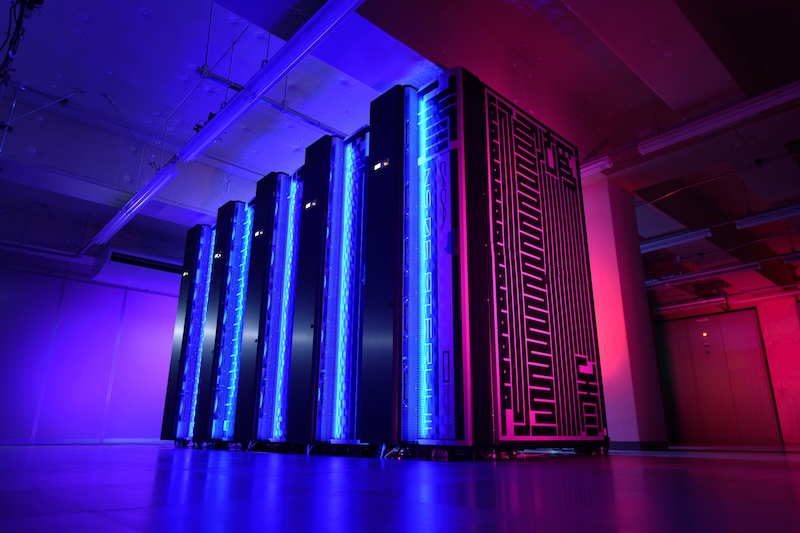Overview
The Center for Computational Astrophysics at the National Astronomical Observatory of Japan (NAOJ) has introduced the HPE Cray XD2000 system as a new supercomputer to replace the current dedicated astronomy supercomputer "ATERUI II." The operation of the new system began on December 2, 2024, at NAOJ Mizusawa Campus in Oshu City, Iwate Prefecture. The new system has been nicknamed NS-06 "ATERUI III," inheriting the name from its predecessor.
ATERUI III has a total theoretical peak performance of 1.99 petaflops (note) and consists of two types of subsystems: "System M," which emphasizes memory bandwidth (3.2 TB/s per node, 12.5 times that of ATERUI II), and "System P," which emphasizes memory capacity (512 GB per node, 1.3 times that of ATERUI II). By utilizing these two systems, which excel in different types of calculations, ATERUI III is expected to achieve faster computation speeds than ATERUI II for various simulations. It is anticipated to further serve as a "laboratory for theoretical astronomy" to investigate a wide range of astrophysical phenomena. (December 2, 2024)
(note) Flops (floating-point operations per second) is a unit of computational speed. One petaflops means the capability to perform one quadrillion operations per second.
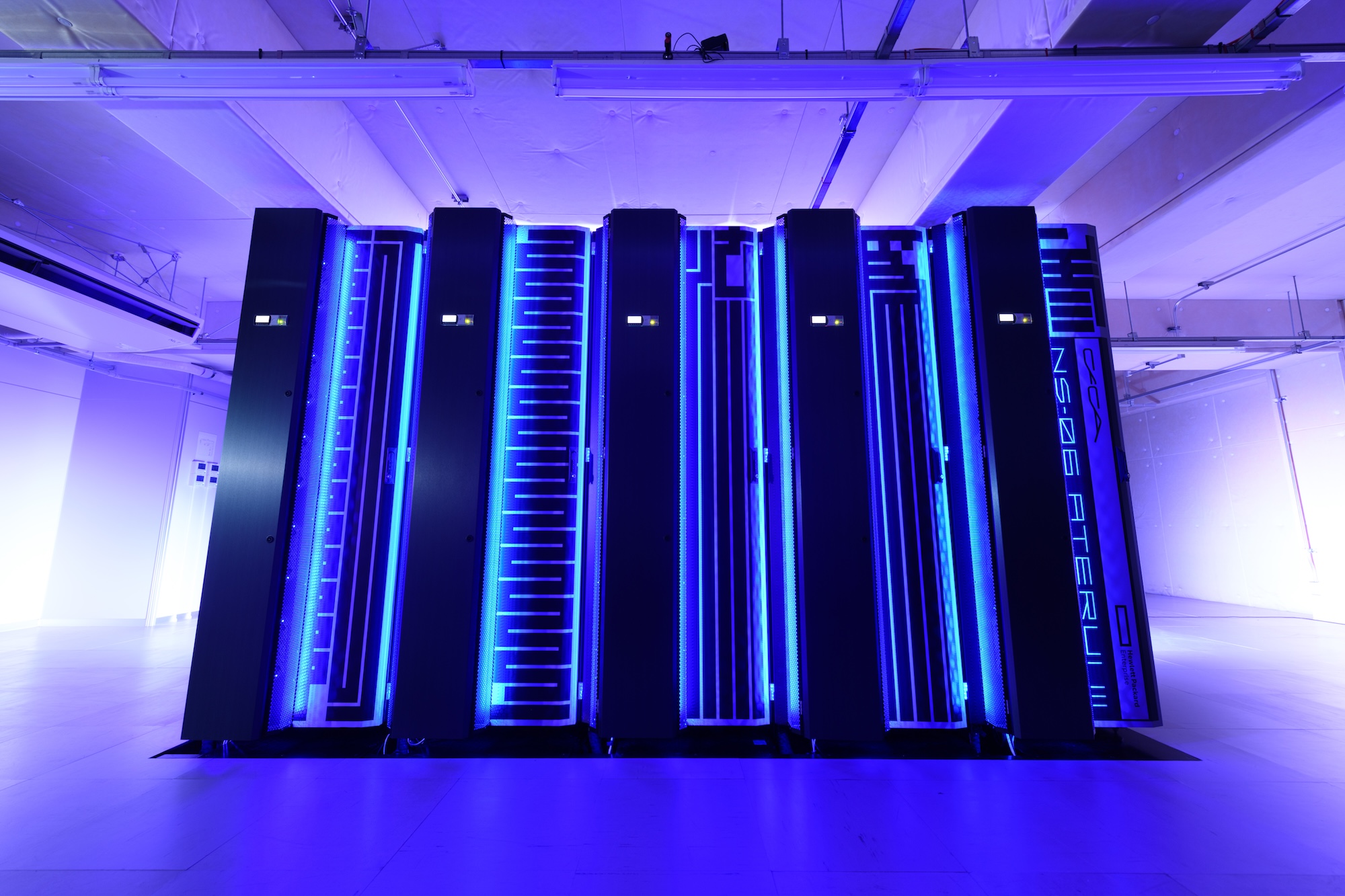
Download: [JPG (21.13 MB)]
Basic specifications of ATERUI III
| ATERUI III (total) |
ATERUI III (System M) |
ATERUI III (System P) |
ATERUI II (2018.6-2024.8) |
|
| Theoretical Peak Performance | 1.99 Pflops | 1.4 Pflops (6.8 Tflops) |
0.57 Pflops (7.168 Tflops) |
3.087 Pflops |
| CPU | Intel® Xeon® CPU Max 9480 | Intel® Xeon® Platinum 8480+ | Intel® Xeon® Gold 6148 | |
| Core number | 32,256 | 23,296 (112) | 8,960 (112) | 40,200 |
| Node number | 288 | 208 | 80 | 1,005 |
| Memory bandwidth | 665 TB/s (3200 GB/s) | 98.24 TB/s (614 GB/s) | 257.28 TB/s (256 GB/s) | |
| Memory | 26.6 TB (128 GB) | 40.96 TB (512 GB) | 385.9 TB (384 GB) |
※ The numbers in brackets are the specifications per node.
Images
For the use of contents in this website
- Contents are to be used with a clear indication of its copyright (e.g. (c) NAOJ.)
- If you would like to use the contents found in this web site, please follow Terms of Use of the Website of NAOJ.
ATERUI III Pictures
Photograph by Shogo Nagayama, Makoto Shizugami and Hinako Fukushi
Credit: NAOJ
Simulation Examples of ATERUI II
[Formation of molecular clouds]

Download: [PNG (1.81 MB)]
[Collision or molecular clouds]
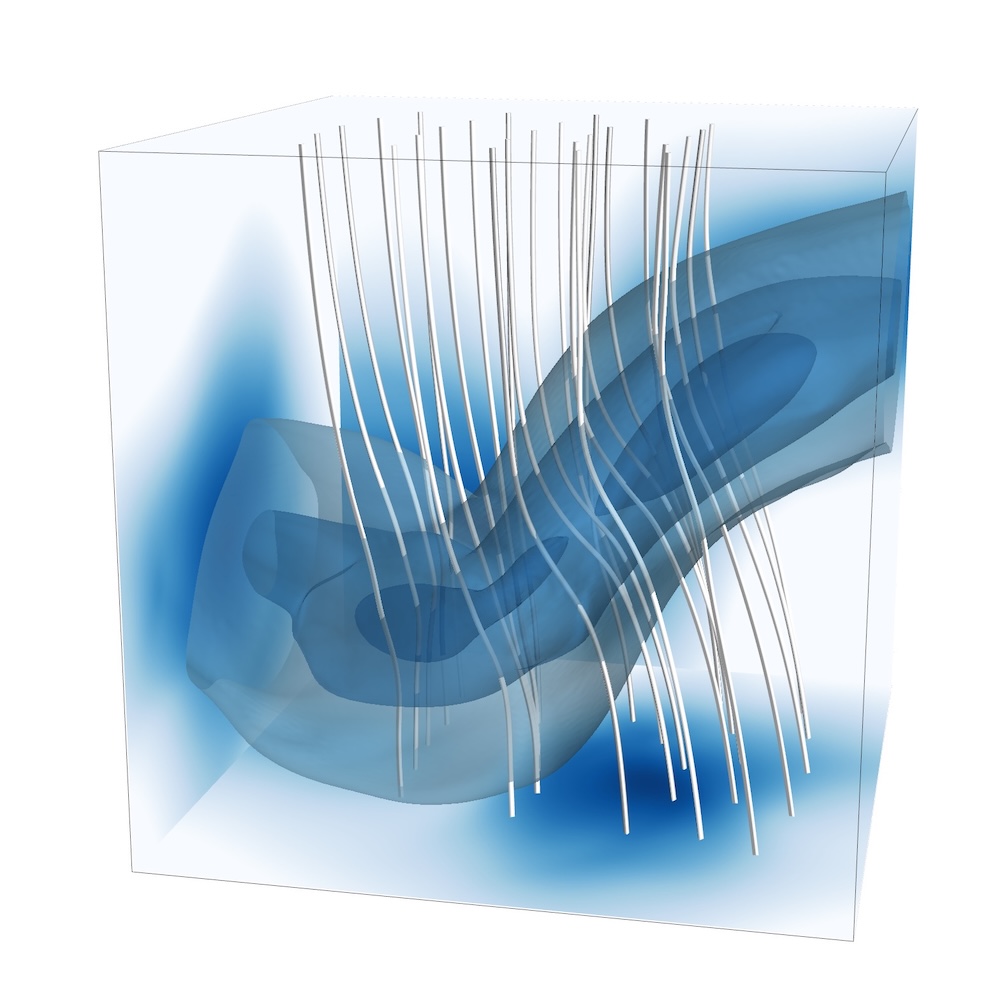
Download: [JPG (314.35 KB)]


